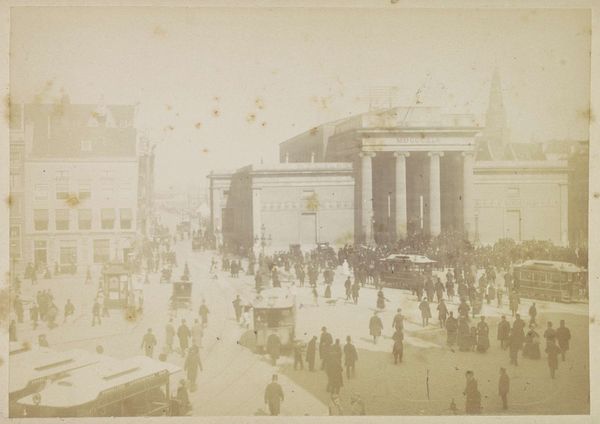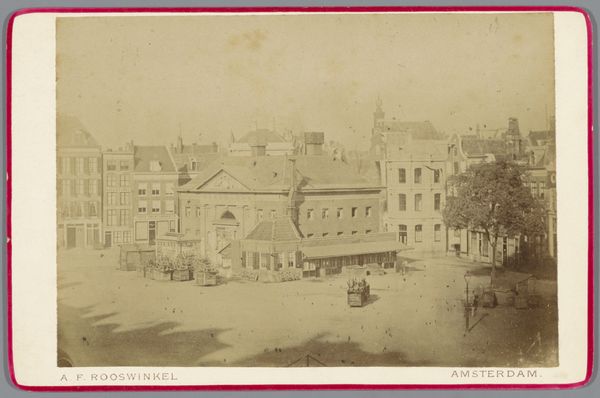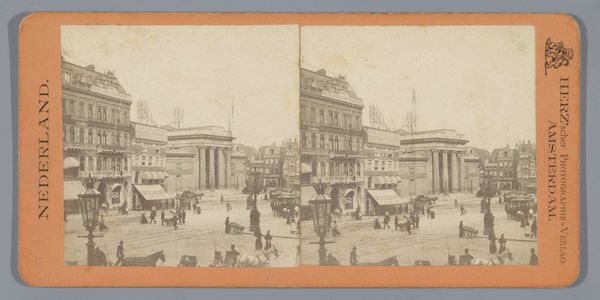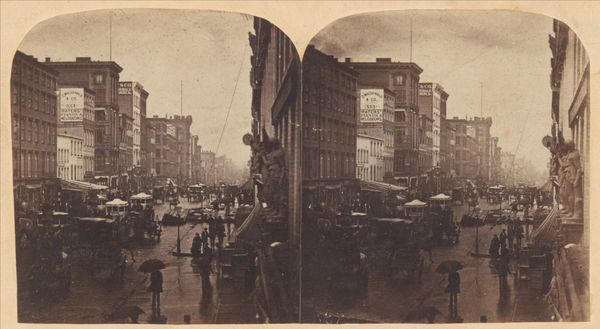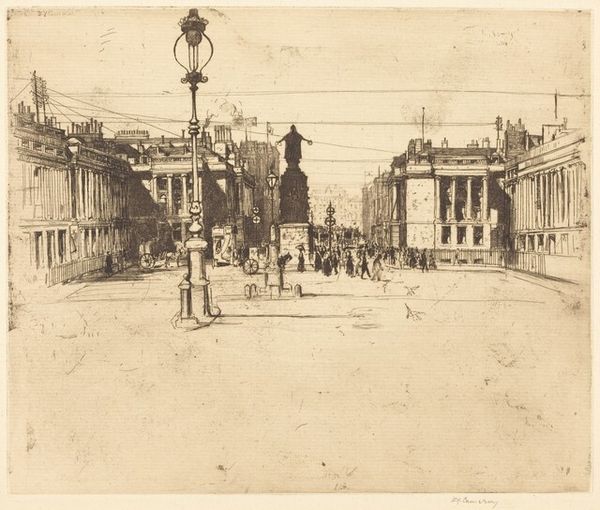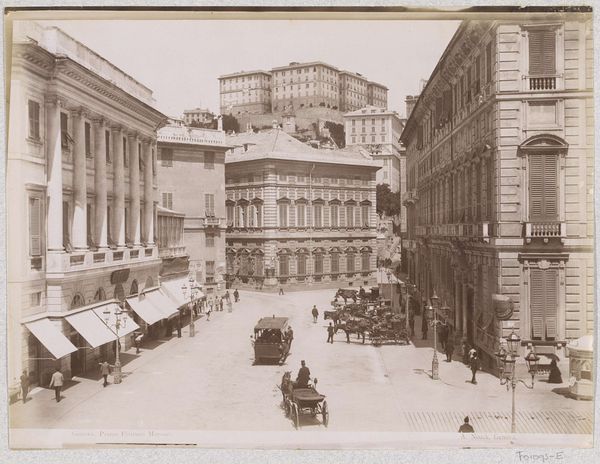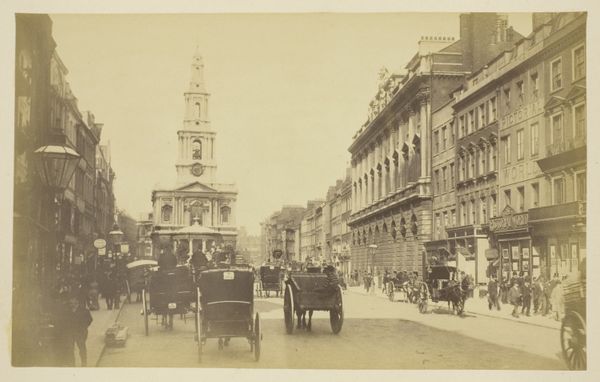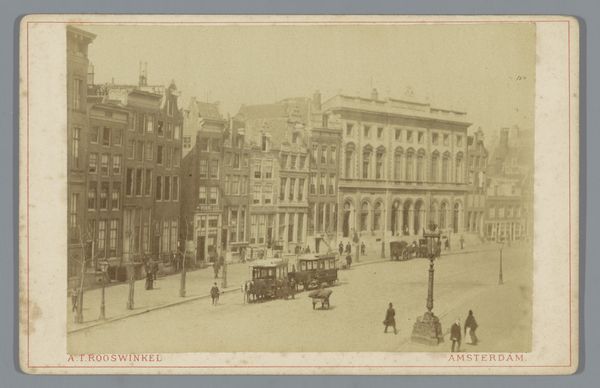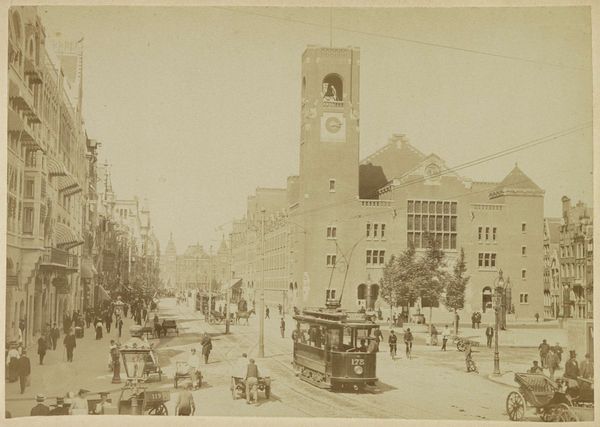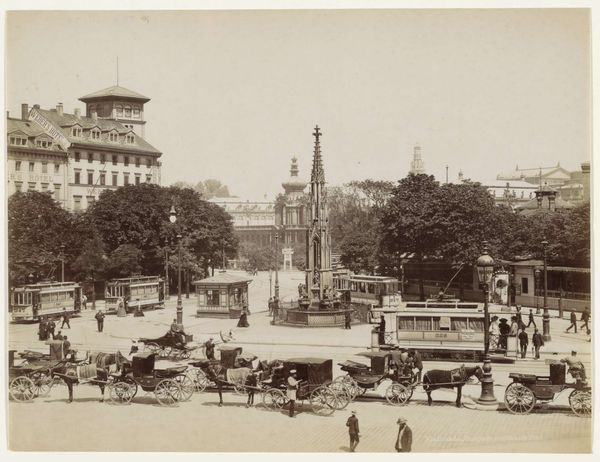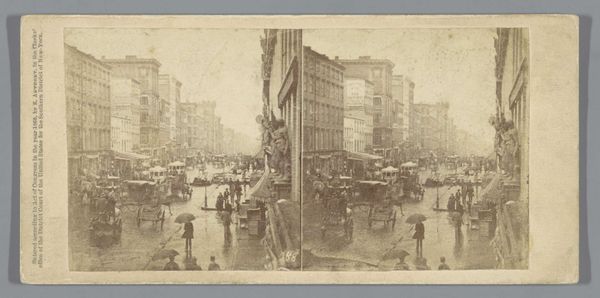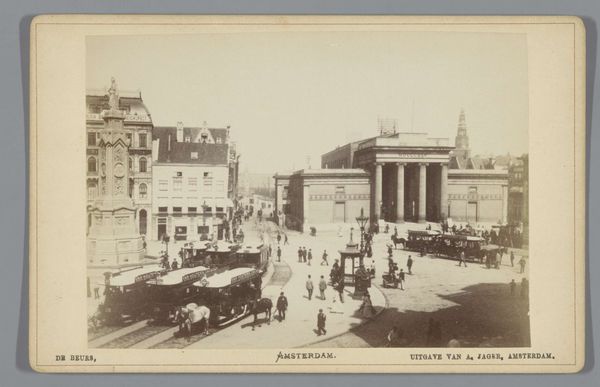
Gezicht op de Dam met links 'Naatje' en rechts de Beurs van Zocher te Amsterdam c. 1860 - 1900
0:00
0:00
print, photography, albumen-print
#
statue
# print
#
photography
#
cityscape
#
albumen-print
Dimensions: height 50 mm, width 80 mm
Copyright: Rijks Museum: Open Domain
Curator: Standing before us is a historical document frozen in time: "Gezicht op de Dam met links 'Naatje' en rechts de Beurs van Zocher te Amsterdam," an albumen print likely created between 1860 and 1900. Editor: There’s a certain bustling energy about this cityscape despite the muted sepia tones. The geometrical precision of the architecture contrasts rather nicely with the indistinct movement of the figures and trams. Curator: Precisely. The artist, Andries Jager, captures the architectural layout through orthogonal lines converging on the horizon. I am drawn to the sharp, structural composition balanced by the distribution of shadows, highlighting both the monumentality of the buildings and the intricacies of city life. The materiality of albumen prints lends a soft, almost ethereal quality to the hard city structures, transforming the rigid geometry into a harmonious balance. Editor: But the albumen printing process! Consider the conditions in Jager’s studio and darkroom—the chemical labor and glass plates required to generate this view. Its historical value as evidence of early photographic techniques intersects so perfectly with Amsterdam's own industrious ethos at the time, all the trams, carriages, horses – the engine of commerce, really. And that large classical structure, The Beurs – a material manifestation of value itself. Curator: Yes, there's an inherent beauty to this reproduction, a tension perhaps, between documentation and aesthetic design which reveals the subject's spatial integrity. The arrangement and perspective create an intricate design meant to create a feeling of equilibrium. Editor: I am more concerned with labor as an activity integral to producing images of labour. To consider photography merely in terms of compositional harmony risks overlooking those exploited within emerging photographic industries and those whose material wealth permitted them leisure activity – to even pose for the photo at all! Curator: Certainly valid points; a more holistic analysis could embrace multiple theoretical angles, enriching the experience for all audiences! Editor: Yes, seeing this work does help clarify some important points on how artistic value and social history overlap through their respective making processes.
Comments
No comments
Be the first to comment and join the conversation on the ultimate creative platform.

